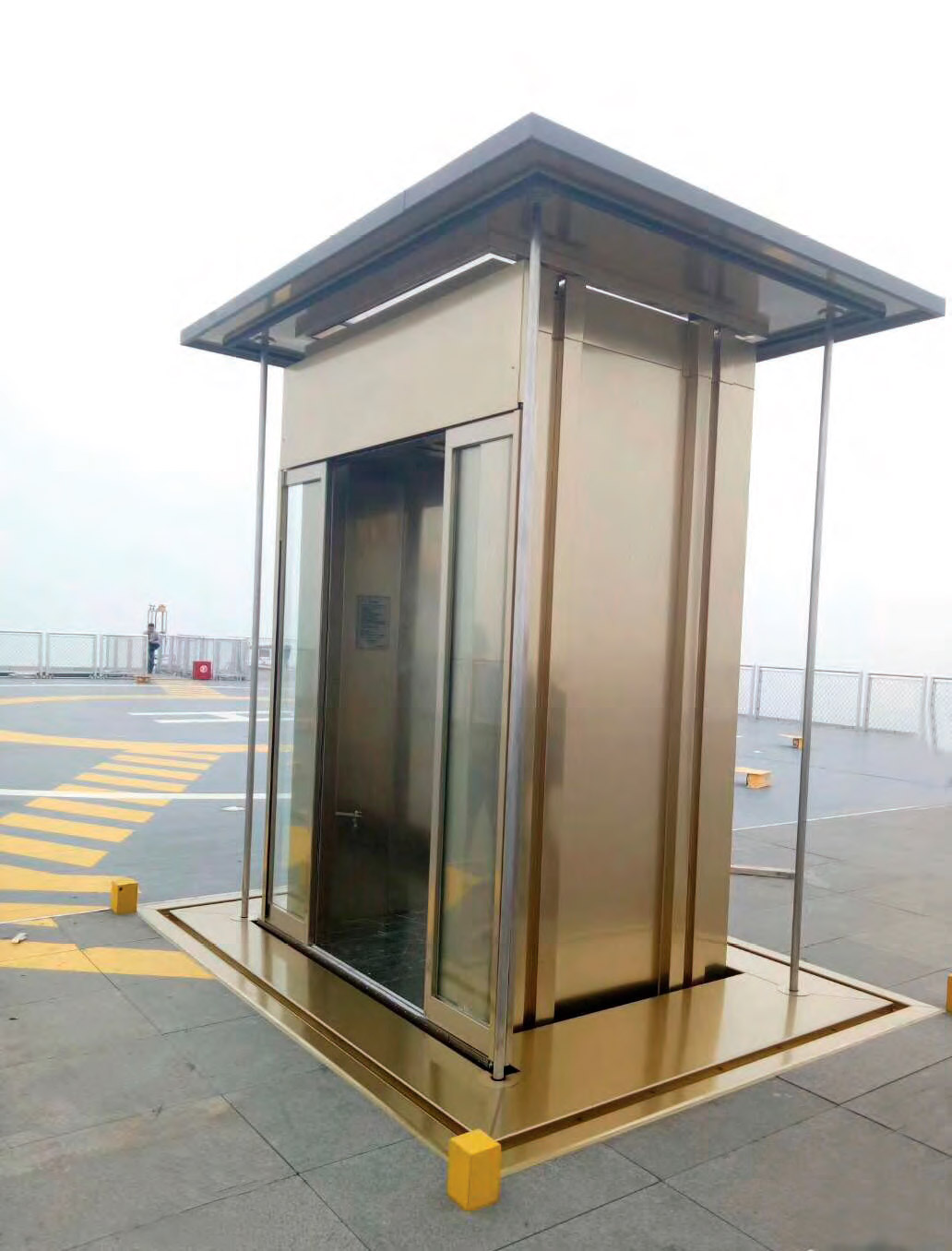Top Side Acces
Aug 1, 2020

Dongnan Elevator creates a helicopter apron elevator for One Shenzhen Bay.
by Shirley Zhao and Peng Jie, EW Correspondent
One Shenzhen Bay is a mixed-use development in Shenzhen, China, comprising six luxury residential towers, one office tower and a supertall that houses offices, serviced apartments and a hotel. Atop the roughly 341-m-tall centerpiece tower is a helicopter landing apron that facilitates emergencies or other uses as needed. Building access to and from the apron is achieved via a special-purpose lift, which the developer turned to Dongnan Elevator Co., Ltd. to install.
The solution chosen for One Shenzhen Bay is a hydraulic lift with sufficient capacity to carry a stretcher and attendants. One of the most important features of a rooftop helicopter apron is that it have a flat landing surface with minimal protrusions. To accommodate this, the upper end of the elevator shaft must be below roof level, with the car designed to rise out of the roof. It must have a solid cover to protect against wind, water and falling objects. When not in use, the car usually remains parked at the lower landing. When called to ascend, it pushes the cover open, and its floor is leveled with the rooftop landing. When it descends, the cover again closes over the shaft.
The building is owned by CR Land Shenzhen Bay Development Co., Ltd. and was designed by Kohn Pedersen Fox Associates. The contractor was China Construction 3rd Engineering Bureau Co., Ltd., and the project supervisor was Shanghai Project Management & Engineering Consulting
Co., Ltd.
Requirements and Difficulties
The lift carries a load of 1000 kg and travels 17.53 m at 0.75 m/s in a shaft with dimensions of 2.4 X 1.9 m. The lift has only two stops but has safety hatch doors between the two landings. The helicopter apron is located at the top of the tower and, at a height approaching 350 m, is exposed to strong winds and other weather. To deal with these problems, the lift must have:
- Waterproofing on both the top section of the hoistway and car
- A reliable door operator that can function under greater wind pressure
- Antirust and anticorrosion measures for shaft components and materials
- Waterproofing for electrical parts and components
- Waterproofing and wind mitigation for the rooftop hatch and top cover to allow the car to rise in adverse conditions and to maintain the cover’s integrity
- Safety monitoring around the hoistway
Because the helicopter apron has no headroom — a deviation from existing codes — it was necessary to take a comprehensive examination of both lift per-formance and safety issues, paying special attention to protection of the lift location.
Design
In the planning stage, Dongnan maintained active communication with the builder to determine proper interfaces between lift and building with regard to force distribution issues. The company worked with the designer to determine precise locations of pre-embedded parts. The complete lift-system design work involved determining placement of components and optimizing their arrangement within the constraints of the shaft dimensions to ensure high lift performance and adherence to safety needs. Ultimately, all technical difficulties were addressed in a step-by-step manner that gave priority to safety, reliability and riding comfort.
Installation
The company formed a team of experienced technicians to carry out the installation. Professionals and specialists were onsite and offsite to offer guidance on procedures. Considering the special aspects of the project, the components were preassembled in the factory to reduce as much onsite work as possible, with a view toward improving efficiency and accuracy. The installation team overcame difficulties including working with complicated and nonstandard components and facing the need to make frequent onsite adjustments. The installation team was able to successfully complete the task while maintaining high standards of workmanship.
Considering the special aspects of the project, the components were pre-assembled in the fac-tory to reduce as much onsite work as possible, with a view toward improving efficiency and work accuracy in the field.
Acceptance
Upon completion, the company assigned experienced inspectors to the jobsite to carry out a preliminary examination by the factory. An independent inspection was then conducted by the Shenzhen Institute of Special Equipment Inspection & Testing, which examined the unit’s performance and safety features. The unit was approved in March 2019.
Code Issues
Because the helicopter apron has no headroom — a deviation from existing codes — it was necessary to take a comprehensive examination of both lift performance and safety issues, paying special attention to protection of the lift location. Lift operation in conjunction with helicopter landings and takeoffs was enabled using a combination of proper hardware, design and installation work.
Get more of Elevator World. Sign up for our free e-newsletter.






